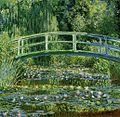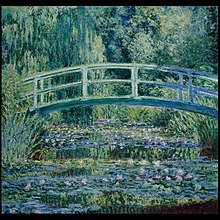À propos • Aide • Le Livre d'or
Les lecteurs de Vikidia demandent des articles en plus. Voyez la liste d'articles à créer, et venez nous aider à les rédiger !
Les lecteurs de Vikidia demandent des articles en plus. Voyez la liste d'articles à créer, et venez nous aider à les rédiger !
Fichier:Water-Lilies-and-Japanese-Bridge-(1897-1899)-Monet.jpg
Aller à la navigation
Aller à la recherche


Taille de cet aperçu : 617 × 599 pixels. Autres résolutions : 247 × 240 pixels | 494 × 480 pixels | 791 × 768 pixels | 1 031 × 1 001 pixels.
Fichier d’origine (1 031 × 1 001 pixels, taille du fichier : 381 kio, type MIME : image/jpeg)
Historique du fichier
Cliquer sur une date et heure pour voir le fichier tel qu'il était à ce moment-là.
| Date et heure | Vignette | Dimensions | Utilisateur | Commentaire | |
|---|---|---|---|---|---|
| Actuel | 19 janvier 2009 à 22:57 |  | 1 031 × 1 001 (381 kio) | wikimediacommons>Krscal | {{Information |Description={{en|1=Water Lilies and Japanese Bridge (1897-1899) by Claude Monet Princeton University Art Museum}} |Source=the-athenaeum.org http://www.the-athenaeum.org/art/full.php?ID=3788 |Author=Claude Monet |Date=1897-1899 |Permission= |
Utilisation du fichier
Les 5 pages suivantes utilisent ce fichier :



